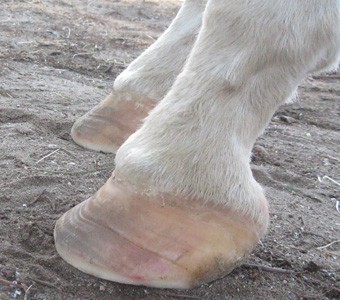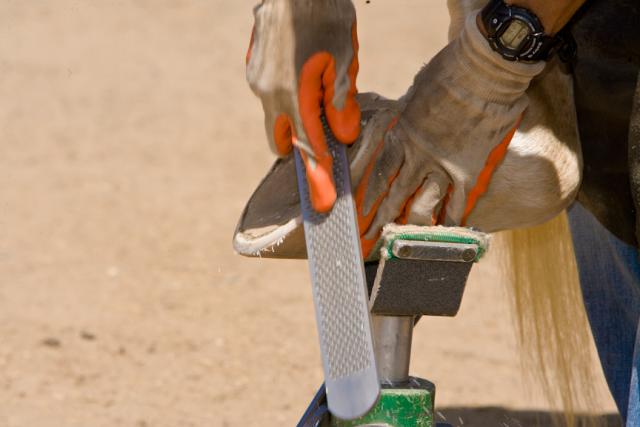As a barefoot hoof care practitioner, I typically keep all of my clients on a four week trim schedule. If you are fortunate enough to have your horse in a pasture or large pen with ideal barefoot footing, or you manage to ride many miles every week, four weeks is about ideal. But for most working folks who only ride every couple of days, with horses in the typical boarding situation, four weeks allows quite a bit of growth. If you really want to maintain an ideal foot, mitigate any flaring, and mimic natural wear, trimming a little bit every week or every two weeks is absolutely the way to go. The same is true for rehabbing formerly shod feet, and especially for growing out things like wall cracks and white line separation.

Here’s a foot that will absolutely benefit from bringing that
runaway toe back weekly once we pull his shoes.
Doing some touch up work between your trimmer’s scheduled visits can really help keep things moving along in the right direction. If you trimmer agrees, he or she will probably also gladly show you how to accomplish the trim. Your trimmer will also provide guidance on what, and how much needs to be trimmed. This can depend a lot on what kind of pathology you’re dealing with, but in most cases, there are some basic touch ups that are a good call for most hooves. All you really need to accomplish these interim trims is a rasp.

with weekly trims can greatly enhance comfort.
But don’t try to eradicate the flared toe on a horse like this entirely.
Remember that the corium/vasculature still wrap around that distorted coffin bone.
The wall is simply mirroring the internal structures.
Removing that flare entirely will leave the coffin bone vulnerable.

The bevel can be rasped from the bottom of the foot, as well, and this way, it’s easier to recognize how much needs to be done. Angle your rasp at a 45 degree angle from the plane of the bottom of the foot, and bevel to the unpigmented wall, or until there is about 1/4″ of flat wall width.

Beveling from the bottom. Note the angel of my rasp in relation to the bottom of the foot.




